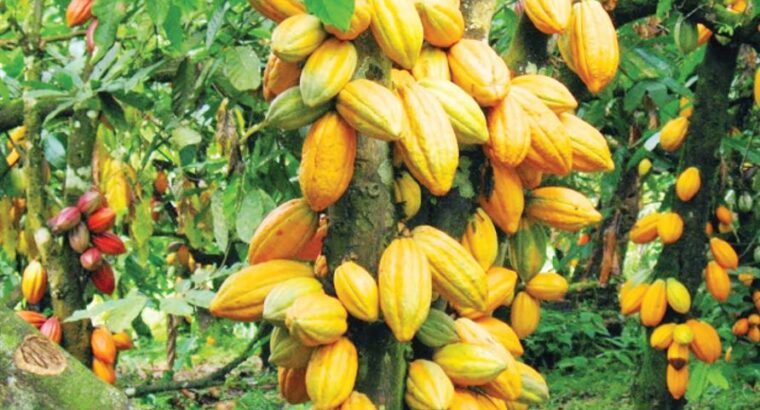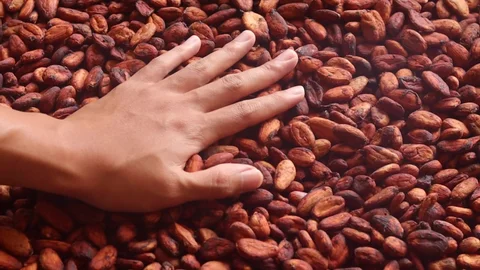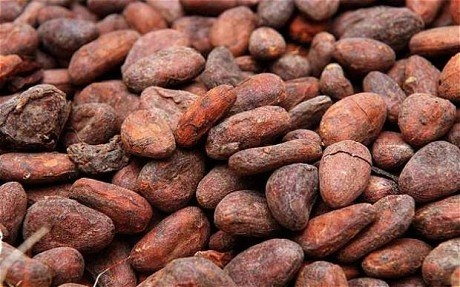Step-by-Step Guide to Cocoa Farming in Nigeria

Cocoa farming is a major agricultural activity in Nigeria and serves as a vital income source for farmers and the nation’s economy. Known for its role as a raw material in chocolate production, cocoa has a high demand in both local and international markets. If you are looking to venture into cocoa farming in Nigeria, this step-by-step guide will help you understand the process from land preparation to harvesting and marketing.
1. Understand Cocoa Farming Basics
Before diving into cocoa farming, it is essential to understand the basics of cocoa cultivation, the climatic conditions it requires, and its economic potential. Cocoa thrives in tropical climates with well-distributed rainfall, high humidity, and temperatures ranging from 21°C to 32°C. It also requires well-drained, fertile soils rich in organic matter.
2. Choose a Suitable Location
The location of your farm plays a critical role in the success of your cocoa farming business. Cocoa grows best in southern Nigeria due to its favorable climate and soil conditions. States like Ondo, Cross River, Ekiti, Ogun, Edo, Osun, and Delta are ideal for cocoa farming.
3. Select High-Quality Cocoa Seeds
Invest in disease-resistant, high-yield cocoa varieties to maximize productivity. There are three main types of cocoa:
- Criollo: Known for its fine flavor but lower yields.
- Forastero: High-yielding and disease-resistant, commonly grown in Nigeria.
- Trinitario: A hybrid of Criollo and Forastero, combining good flavor and high yields.
Buy certified seeds from reputable agricultural institutes or seed companies to ensure the quality and viability of the seeds.

Step-by-Step Guide to Cocoa Farming in Nigeria
4. Prepare the Land
Land preparation is critical to creating a conducive environment for cocoa plants to grow.
- Clear the land: Remove weeds, shrubs, and trees to prepare the land for planting.
- Test the soil: Conduct soil testing to determine its fertility and pH level (5.5 to 7.5 is ideal for cocoa).
- Improve soil quality: If the soil is not fertile, apply organic manure or fertilizers to improve its quality.
- Create shade: Young cocoa plants need partial shade to thrive. Plant temporary shade crops like bananas or plantains to protect the cocoa seedlings.
5. Nursery Preparation
Establishing a nursery is an essential step in cocoa farming to ensure healthy seedlings.
- Use polybags filled with fertile topsoil to grow the seedlings.
- Water the seedlings regularly and ensure they are kept in a shaded area.
- Transplant the seedlings to the main farm after 4–6 months, when they have grown to about 30–40 cm in height.
6. Planting Cocoa Trees
- Spacing: Cocoa trees should be spaced 3 meters apart in rows to allow for proper growth and air circulation.
- Digging holes: Dig planting holes 30 cm wide and 30 cm deep.
- Planting: Carefully transplant the seedlings into the prepared holes and fill with topsoil.
Plant during the rainy season to ensure sufficient water supply for the seedlings.
7. Provide Shade for Young Plants
Cocoa seedlings are sensitive to direct sunlight. Use shade plants like bananas or intercropping with taller crops such as coconuts and oil palms to provide shade during the early stages of growth. As the cocoa trees mature, they will create their own canopy.
8. Watering and Irrigation
Watering is crucial, especially during the dry season. Ensure the plants receive enough water to avoid stress and poor growth. If possible, set up an irrigation system for consistent water supply.
READ MORE: Comprehensive Guide to Cassava Farming in Nigeria: Step-by-Step Process for High Yields
9. Weeding and Mulching
Weeding should be done regularly to prevent competition for nutrients and water. Mulching with dried leaves, grasses, or compost can help retain soil moisture, regulate soil temperature, and reduce weed growth.
10. Fertilization and Soil Management
Apply fertilizers and organic manure to replenish soil nutrients.
- Nitrogen, phosphorus, and potassium (NPK) fertilizers are commonly used in cocoa farming.
- Perform periodic soil testing to monitor nutrient levels and adjust fertilization as needed.
11. Pest and Disease Control
Cocoa plants are susceptible to pests and diseases, including black pod disease, capsid bugs, and cocoa mirids. Implement the following control measures:
- Use resistant cocoa varieties.
- Apply approved pesticides and fungicides.
- Practice good farm hygiene by removing infected pods and weeds.
- Prune the cocoa trees to improve air circulation and reduce pest habitats.
12. Pruning and Maintenance
Regular pruning helps remove dead or diseased branches and promotes healthy growth. Pruning should be done at least twice a year to maintain a manageable tree height and improve sunlight penetration.
13. Harvesting
Cocoa trees start producing pods 3–5 years after planting, depending on the variety. Harvesting is done in two main seasons:
- Main harvest season: October to February.
- Light harvest season: April to June.
Harvest cocoa pods when they are ripe, turning yellow or orange. Use a sharp knife or harvesting hook to avoid damaging the pods or the tree.
14. Processing Cocoa Beans
After harvesting, the beans need to be processed to prepare them for sale:
- Fermentation: Remove the beans from the pods and ferment them for 5–7 days to develop flavor and quality.
- Drying: Dry the fermented beans in the sun for 1–2 weeks until the moisture content reduces to 6–7%.
- Sorting and packaging: Sort the dried beans to remove defective ones and package them for sale.

Step-by-Step Guide to Cocoa Farming in Nigeria
15. Marketing and Selling Cocoa
Nigeria’s cocoa market offers opportunities to sell both locally and internationally. Partner with exporters, cooperatives, or processing companies to access larger markets. Ensure your cocoa beans meet the quality standards required for export.
16. Reinvestment and Expansion
To sustain your cocoa farming business, reinvest profits into farm maintenance, acquiring more land, or adopting modern farming techniques. Continuous learning and innovation can help you stay competitive in the cocoa farming industry.
Final Thoughts
Cocoa farming in Nigeria is a rewarding venture for those willing to put in the effort and follow best practices. With proper planning, maintenance, and marketing, you can build a profitable and sustainable cocoa farming business. Start small, focus on quality, and gradually expand as you gain experience.

Leave your comment